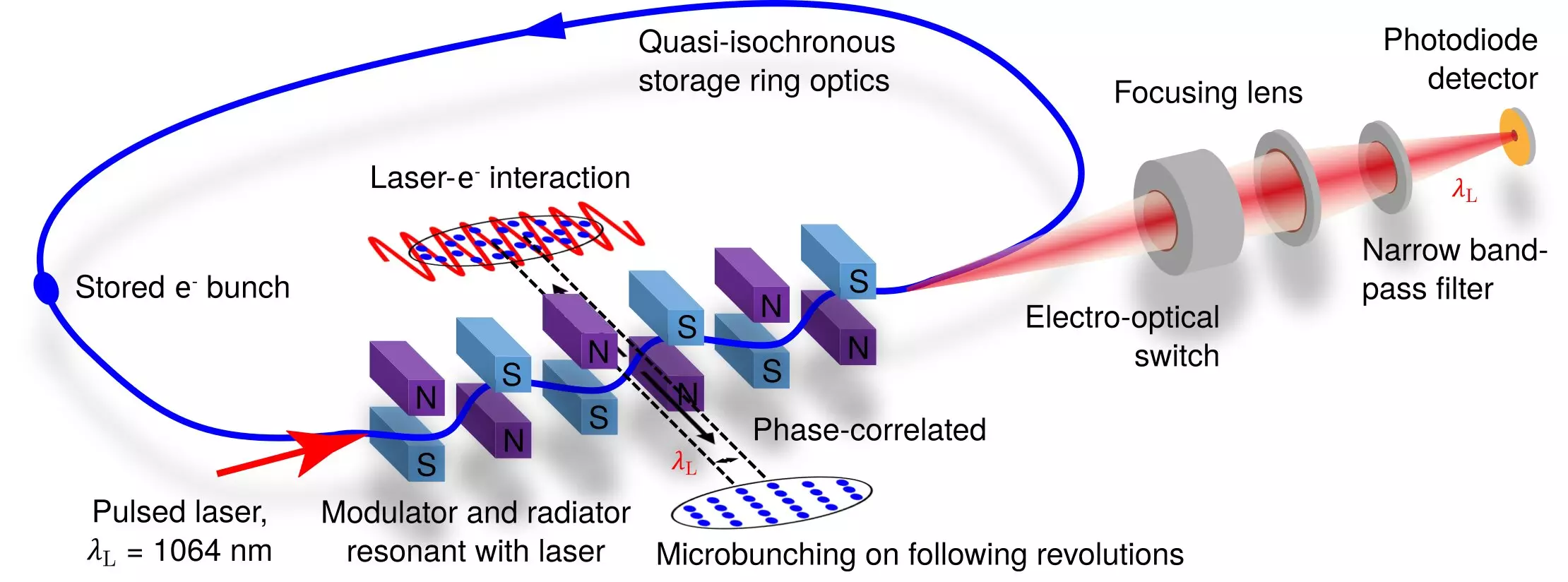In the world of materials research, one of the key tools utilized by scientists is synchrotron radiation. This form of light emission occurs when ultrafast electrons are deflected, creating a high-brilliance light source that can be used to study a broad spectrum of materials. Traditionally, this light is longitudinally incoherent, making it challenging to extract specific wavelengths for research purposes. Monochromators have been used to address this issue, but they come with a significant decrease in radiant power.
In 2010, physicist Alexander Chao and his doctoral student Daniel Ratner made a groundbreaking discovery that could potentially transform the field of materials research. By shortening the electron bunches in a storage ring to lengths shorter than the emitted light’s wavelength, the emitted radiation becomes coherent. This coherence results in a substantial increase in power output, making it millions of times more powerful than traditional synchrotron radiation sources.
Building upon Chao and Ratner’s discovery, Chinese theorist Xiujie Deng developed settings for a specific type of circular accelerator known as isochrone or “low-alpha” rings. These rings, used in the Steady-State Micro-Bunching project, generate ultra-short particle bunches only one micrometer in length. In 2021, a research team from HZB, Tsinghua University, and PTB successfully demonstrated the feasibility of this concept in a proof-of-principle experiment conducted at the Metrology Light Source (MLS) in Adlershof.
The successful validation of Deng’s theory for generating micro-bunches represents a significant milestone in the development of a new type of radiation source for materials research. HZB project manager Jörg Feikes acknowledges the long-term nature of this development, drawing parallels between the SSMB project and the evolution of free-electron lasers. Despite the potential of this new technology, Feikes anticipates that significant time and effort will be required before it can fully materialize into a practical application.
The future of light sources in materials research holds great promise with the advent of coherent synchrotron radiation sources. Through innovative approaches like the Steady-State Micro-Bunching project, scientists are pushing the boundaries of what is possible in the field of materials research. As technologies continue to evolve and advance, the potential for new discoveries and breakthroughs in this area remains vast.


Leave a Reply